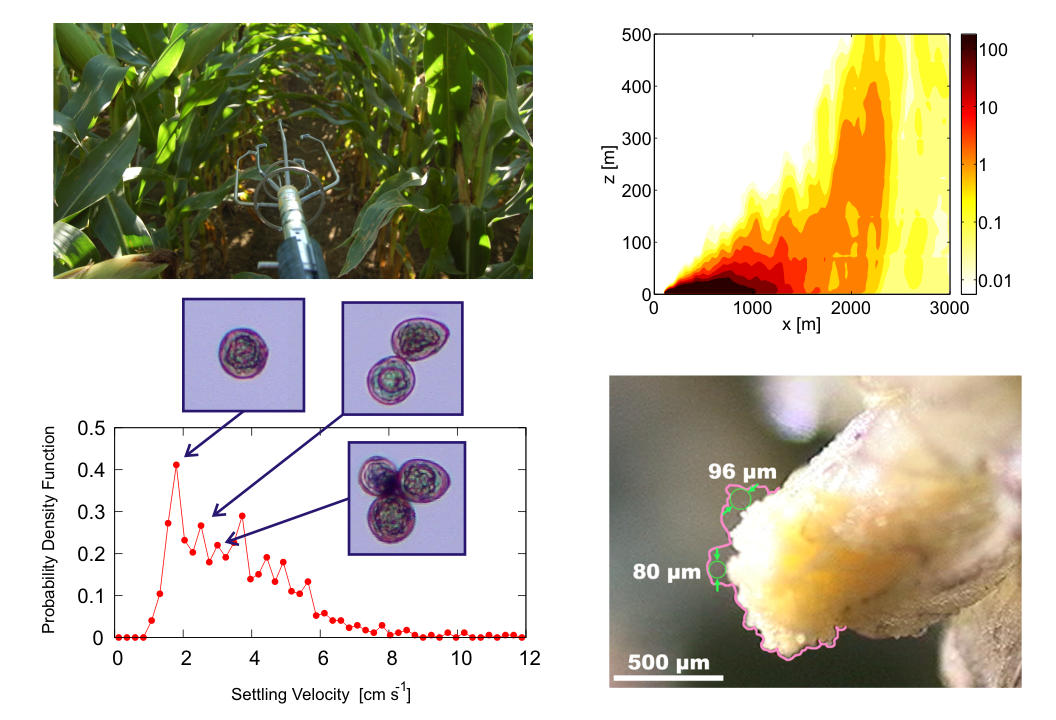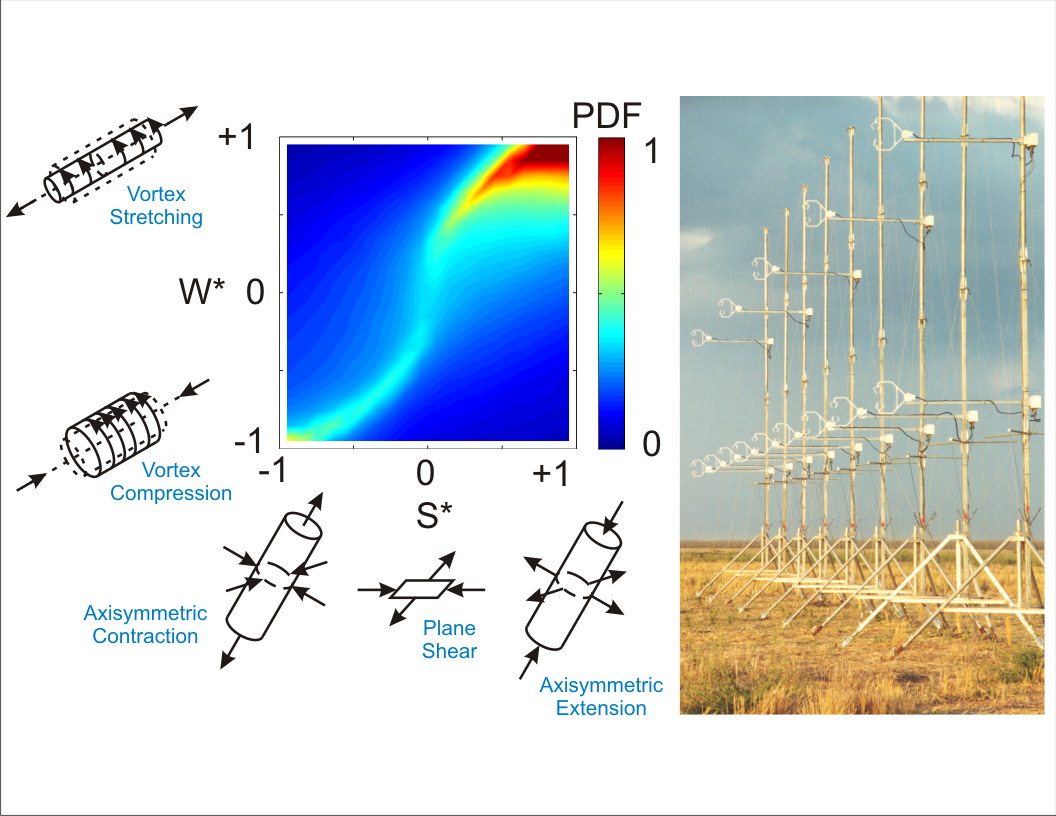Description of research projects and interests
Turbulence and air chemistry in the Amazon forest
Coming soon...
Turbulence and oil dispersion in the ocean mixed layer
Coming soon...
Field observations and LES of flows within plant canopies
Coming soon...
Theoretical and numerical studies of heavy particle dispersion in the ABL

We have developed a framework to model heavy particle dispersion in the ABL using large eddy simulation (see Chamecki et al., 2009, J Aerosol Sci). Particle concentrations are simulated using a filtered advection-diffusion equation containing a term to represent gravitational settling. Boundary conditions for particle concentration at the ground are specified using an extension of the Monin-Obukhov Similarity theory to concentration of settling particles (see Chamecki et al., 2007, BLM). Current research focuses on improving code capabilities to include canopy-turbulence interactions and effects of atmospheric stability.
We have also developed a theoretical framework to predict dispersion of heavy particles released from area sources at or near the ground surface. The first theoretical results for dispersion from sources infinitely long in the crosswind direction are based on self-preservation and boundary-layer scaling of the particle plume (see Chamecki and Meneveau, 2011, JFM). We have also extended these results to incorporate dispersion in the crosswind direction (see Chamecki, 2012, Ag & Forest Met) and buoyancy effects (see Pan et al., 2013, BLM). More recently, we have published a couple of papers focusing on dispersion of particles emitted inside plant canopies (see Pan et al., 2014, JFM and Pan et al., 2015, Ag & Forest Met).
Pollen and pathogenic spore dispersal in the ABL and ecological implications

We use a combination of numerical experiments using LES and intensive field campaigns to study dispersion of pollen grains and pathogenic spores in the ABL. We have found that large fractions of maize pollen are likely dead by the time they are entrained by turbulence and therefore cannot contribute to gene flow (see Chamecki et al., 2011, Ag & Forest Met). We have recently completed the analysis of two major campaigns designed to measure spore concentrations above wheat fields infected with leaf rust (see Chamecki et al., 2012, JAMC). We have recently concluded the development and validation of a simple physically-based model to predict spore deposition and disease severity downwind from agricultural fields infected with rust diseases (see Isard and Chamecki, 2016, Phytopathology).
Improved parameterizations for LES of ABL flows

We use experimental data to perform a priori evaluations of parameterizations for LES of ABL flows. We have recently performed comparisons between several models used to parameterize subgrid scale (SGS) heat fluxes and uncovered some important flaws that drive some nonlinear models to become unstable (see Chamecki, 2010, JoT). We have also developed a new model for the SGS turbulent kinetic energy (TKE) based on models of the energy spectrum of ABL turbulence. The model has impressive performance and is likely a very good alternative to closures based on the solution of an extra equation for the TKE (see Salesky and Chamecki, 2012, BLM). We are currently developing alternative approaches to impose boundary conditions in LES.
A new look at similarity theories for ABL flows
We use a combination of experimental data and numerical simulation outputs to assess the validity of classical similarity theories for ABL flows. We have recently found that deviations from Monin-Obukhov Similarity Theory (MOST) found in experimental data are not explained by measurement error, and reflect the effects of physical processes neglected in the theory (see Salesky and Chamecki, 2012, JAS). We are currently using LES to identify the most important physical processes neglected in MOST.